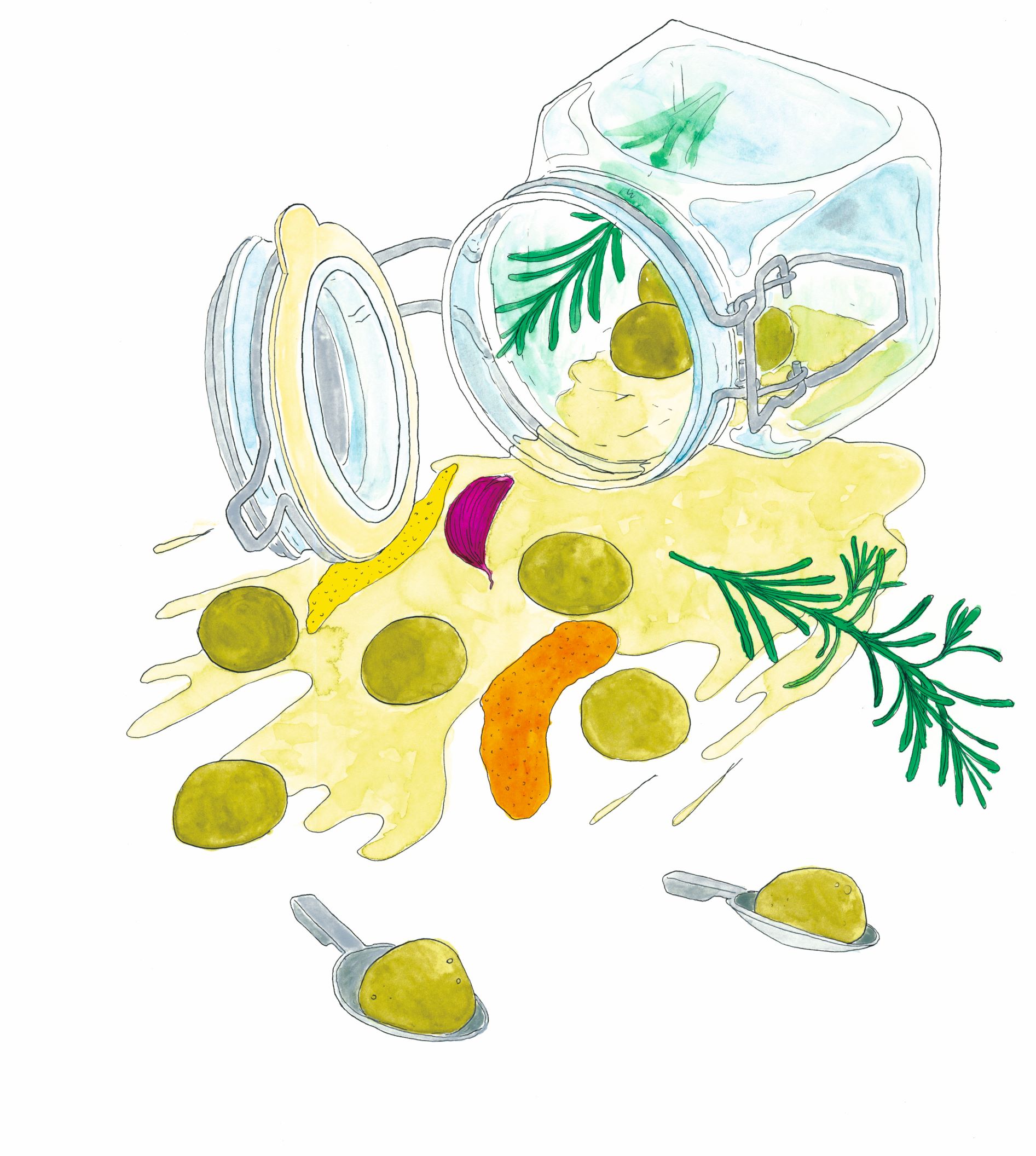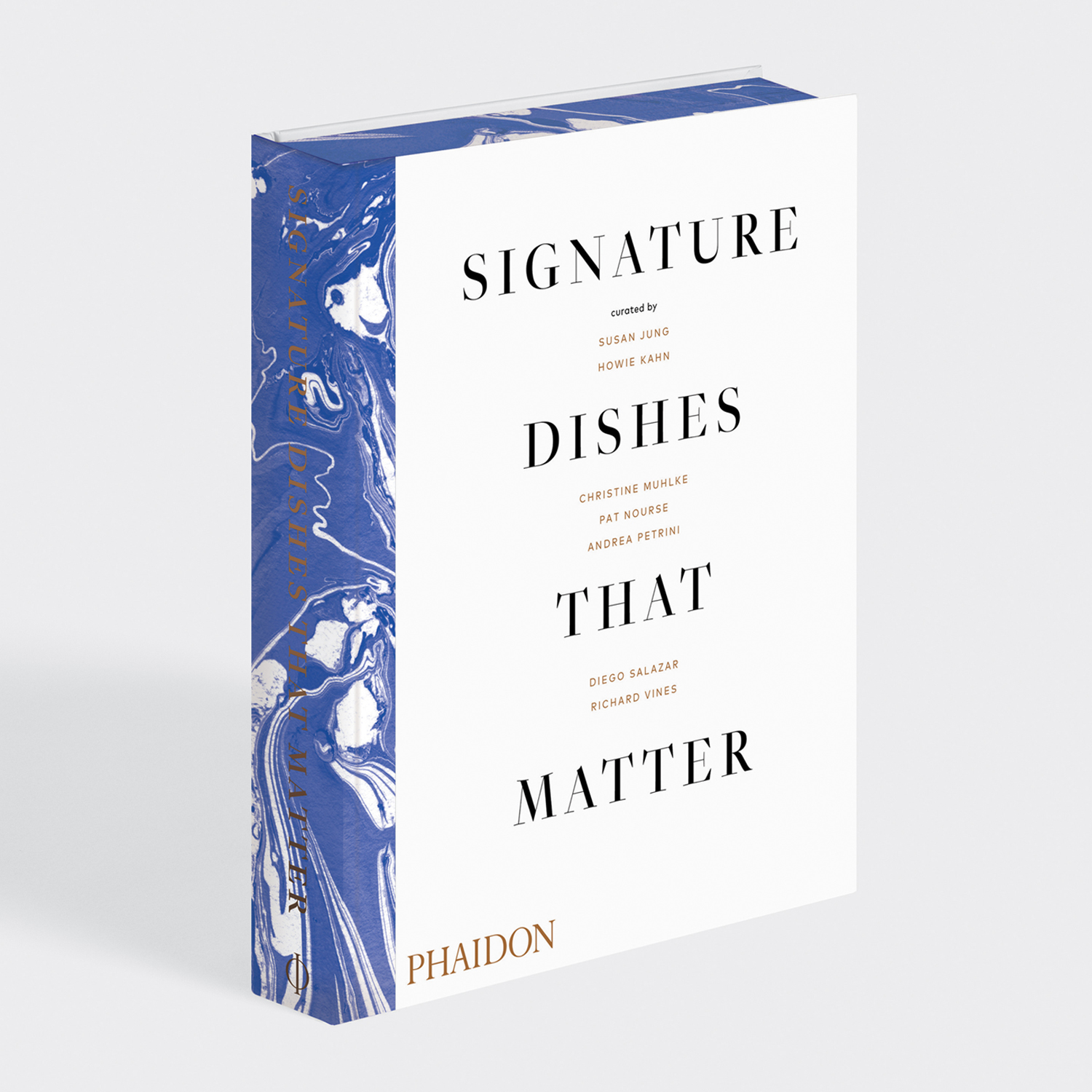
Smart things to say about Signature Dishes: Spherical Olives
Albert Adrià came across the chemical process behind this dish at a sauce factory, and adapted it to suit elBulli
To be a truly great chef, you have to occasionally get out of the kitchen. Some, such as Stephen Harris, find inspiration by digging into local history; others, like Massimo Bottura, find it in philanthropy, and trying to solve food poverty. But, for the brothers Ferran Adrià and Albert Adrià, whose world-famous restaurant elBulli topped the World’s 50 Best Restaurants list a record five times, and introduced the world to the dish, Spherical-I Green Olives, the eureka moment came during a trip to a commercial food factory.
“Albert Adrià came upon the reverse-spherification technique when he visited the laboratory in a food factory and saw a bottle of sauce in which little spheres were floating,” explains our new book, Signature Dishes That Matter. “The technique was created by Unilever in the 1950s as a drug delivery system.
“When he asked the chemist how it was done, he was handed a bag of alginate. Back at the elBulli lab, Adrià added water to the sodium alginate in one bowl, and calcium chloride and water in another. When a spoonful of the liquid calcium was dropped into the alginate, a thin, gel-like skin formed around it. When punctured, liquid escaped.”
The ‘reverse’ bit in reverse-spherification refers to the chemical technique used, distinguishing it from a different way to enclose liquids in an edible gel membrane, which is known simply as ‘spherification’.
Yet, regardless of the science involved, the gastronomic possibilities of this technique were obvious to the chef almost immediately. “I began to tremble and sweat,” recalled Adrià on the Netflix series Chef’s Table. “And I asked myself, ‘Where is the limit?’ That moment, I realised that I don’t see a ceiling. And from then on, our techniques really took off.”
However, the most famous example of reverse-spherification, elBulli’s Spherical-I Green Olives, still took two years to get from elBulli’s test kitchen to plates of its diners.
Despite this prolonged development, the dish is actually something home cooks can recreate; the recipe for these juicy, olive-like balls is produced in our new book, and the technique has been used by many other well-known chefs too, thanks in part to the DIY kits Ferran and Albert Adrià sell.

“Spherification travelled around the world, with balls both sweet and savoury appearing at restaurants like José André’s Minibar and Grant Achatz’s Alinea. Trompe l’oeil ‘caviars,’ ‘yolks,’ ‘ravioli,’ and other bursting bites were enabled by the Adrià's own brand of powders.”
And, while it may no longer impress adventurous diners, experience of eating this distinctly 21st century dish – “the smooth green oval burst on the tongue, filling the mouth with an intensely flavoured juice tasting of the ideal olive” is our how book puts it – means that Albert Adrià is still on the ball.
“To this day, the olives remain on the menu at Tickets, Albert’s tapas bar in Barcelona,” notes our new book, “proving that although the trend has moved away from molecular gastronomy, genuine deliciousness will always be in favour.
For more on the culinary creations that changed the world, order a copy of Signature Dishes That Matter. The book reveals the closely held secrets behind the world's most iconic recipes - dishes that put restaurants on the map, from 19th century fine dining and popular classics, to today's most innovative kitchens, both high-end and casual. Find out more here.